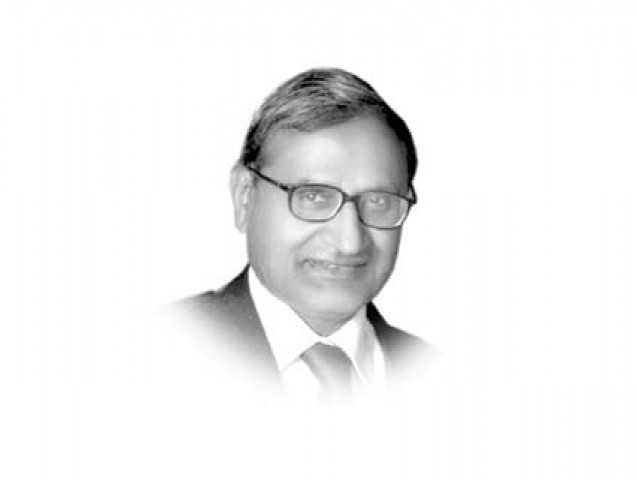Failing private investment
Deindustrialisation in Pakistan may be arriving earlier than it makes economic sense.

Fiscal year 2009-10 witnessed a double digit fall of 13.7 per cent. The downhill trend picked up even more pace in the last fiscal year, 2010-11, when private investment in large-scale manufacturing fell by as much as 27.2 per cent. Allowance for inflation reduces this growth further. Thus in 2010-11, private investment in large-scale manufacturing plummeted by 32.4 per cent. As a percentage of GDP, private investment in such manufacturing has declined from 3.14 per cent in 2006-07 to less than one per cent in 2010-11.
With this declining trend, the share of private investment in large-scale manufacturing as a part of overall private investment has also become much smaller. It used to be the largest sector of private investment until 2005-06 when it was overtaken by transport and communication. In 2009-10, large-scale manufacturing became the fourth largest contributor to private investment after transport and communication, services, and wholesale and retail trade. Fiscal year 2010-11 had the unique distinction that even the agriculture sector had fixed capital formation higher than that of large-scale manufacturing and private investment in small-scale manufacturing was about to reach the level of private investment in large-scale manufacturing. In 2002-03, private investment in small-scale manufacturing was one-fifth of large-scale manufacturing. In constant prices, a noticeable feature is that private investment in agriculture in 2010-11 was larger in absolute terms than in large and small-scale manufacturing put together.
What are these numbers telling us? First, the numbers confirm that political uncertainty, breakdown of law and order, the unending energy crisis, trade liberalisation, natural disasters, the world financial crisis and recession have played havoc with the large-scale manufacturing sector. Its output growth was negative in May and June of fiscal year 2010-11 and just 1.1 per cent for the year as whole. Second, the news that businesses are relocating to Sri Lanka, Bangladesh and Dubai is not exaggerated. The rising remittances also reflect foreign investment by Pakistanis. Third, and most important, the process of deindustrialisation may have begun, not because the economy has matured and higher productivity in manufacturing is shifting labour to services, but as a result of amateurish economic management. In addition to falling investment, the share of large-scale manufacturing in GDP has declined by 1.3 percentage points in the past four years.
However, labour force surveys show an increasing share of manufacturing in employment. This is because the survey does not make a distinction between large and small-scale manufacturing. In the process of economic development, initially agriculture’s share in GDP declines and that of manufacturing rises up to a point before it reduces. But this only happens at a high level of income per capita. Deindustrialisation in Pakistan may be arriving earlier than it makes economic sense.
Published in The Express Tribune, September 9th, 2011.















COMMENTS
Comments are moderated and generally will be posted if they are on-topic and not abusive.
For more information, please see our Comments FAQ